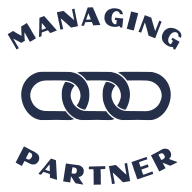What is a Unique Challenge in Change Management?
In the dynamic field of law, change management presents unique hurdles, as illustrated by a General Counsel detailing the challenge of bridging traditional legal services. Alongside industry experts, we've also gathered additional insights that span the spectrum of change management experiences. From managing resistance to new processes to balancing the pace of change with organizational capacity, discover the multifaceted challenges and solutions legal professionals encounter.
- Bridging Traditional Legal Services
- Managing Resistance to New Processes
- Uniting Stakeholders Around Shared Vision
- Sustaining Newly Implemented Changes
- Improving Communication Channels
- Balancing Change Pace with Capacity
Bridging Traditional Legal Services
Navigating change management in the legal department is no easy feat, and my unique challenge was bridging the gap between traditional legal services and increased cost-effectiveness for small businesses. The legal arena tends to be very structured and resistant to change; thus, refashioning a more flexible, affordable model was a demanding endeavor.
However, I managed to overcome this obstacle by devising a model that integrated attorney guidance with cost-conscious solutions. I invested considerable time in understanding our client needs and collaborating with my team to build scalable, affordable legal support. We incorporated technology, streamlined our processes, and continuously innovated our service delivery, helping us succeed in our change management endeavors and also improving our client satisfaction rates significantly.

Managing Resistance to New Processes
Managing resistance to new processes or systems is a common difficulty in change management. When new procedures are introduced, individuals within an organization often cling to the old ways due to comfort and familiarity. This resistance can stem from fear of the unknown or skepticism about the benefits of the new system. Organizations can address this challenge by clearly explaining the reasons for the change and involving employees in the transition process.
Understanding and empathy are key in convincing individuals to embrace new methods. Strong leadership can guide the transition by setting a positive example and providing reassurance. Encourage open dialogue about the changes to facilitate smoother adoption.
Uniting Stakeholders Around Shared Vision
Aligning diverse stakeholders to a common vision presents a unique challenge in change management. Within any organization, people have varying perspectives, objectives, and levels of investment in outcomes. Reaching a consensus on a clear and shared purpose for change can be daunting due to these differing viewpoints. It requires persistent communication, negotiation, and the ability to show how the change benefits everyone involved.
Leaders must commit to uniting these stakeholders, finding common ground, and fostering collaboration. By engaging stakeholders early and often, the initiative has a better chance for success. Invite stakeholders to engage in formulating a shared vision to bolster alignment.
Sustaining Newly Implemented Changes
Ensuring sustainability of newly implemented changes is often an uphill battle in change management. After the initial launch of a new strategy or tool, the novelty can wear off, and employees might fall back into their old routines. Sustaining change necessitates continuous support and reinforcement of the new behaviors.
It's critical to establish metrics to gauge the effectiveness of new changes and to ensure that they're delivering the intended benefits. Organizations should celebrate milestones that demonstrate progress toward long-term goals. Recognize and reward adherence to the new changes to promote sustainable practices.
Improving Communication Channels
Overcoming insufficient communication channels becomes a pronounced challenge when managing change. Without effective methods of dissemination, important details about the changes can be lost, leading to confusion and potential setbacks. It's crucial for messages about the change to reach all levels of the organization in a way that is both clear and actionable.
This often means utilizing multiple platforms and methods of communication to ensure no one is left in the dark. Developing a strong communication plan that outlines how and when information will be shared is essential. Make it a priority to improve communication methods so that vital information flows freely and efficiently.
Balancing Change Pace with Capacity
Balancing the pace of change with an organization's capacity to absorb it is a delicate task in change management. If change happens too quickly, it can overwhelm employees and strain resources, often resulting in poor implementation. Conversely, if change is too gradual, momentum can be lost, and opportunities may slip by.
Striking the right balance requires a keen understanding of the organization's ability to adapt and an agile approach to implementing change. Leaders should closely monitor the impact of changes and adjust their strategies as needed. Take the time to evaluate your organization's capacity for change before plunging ahead.

